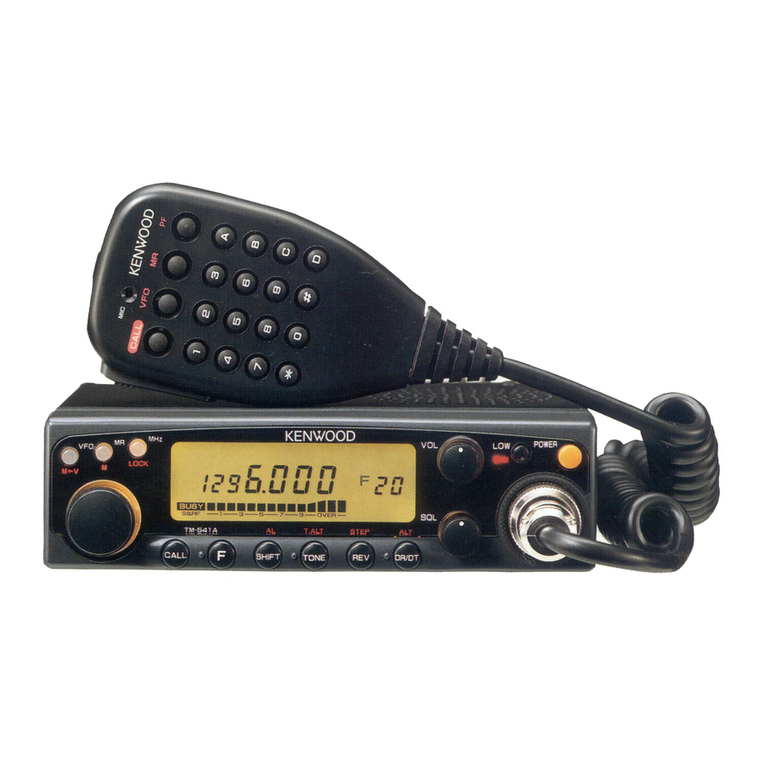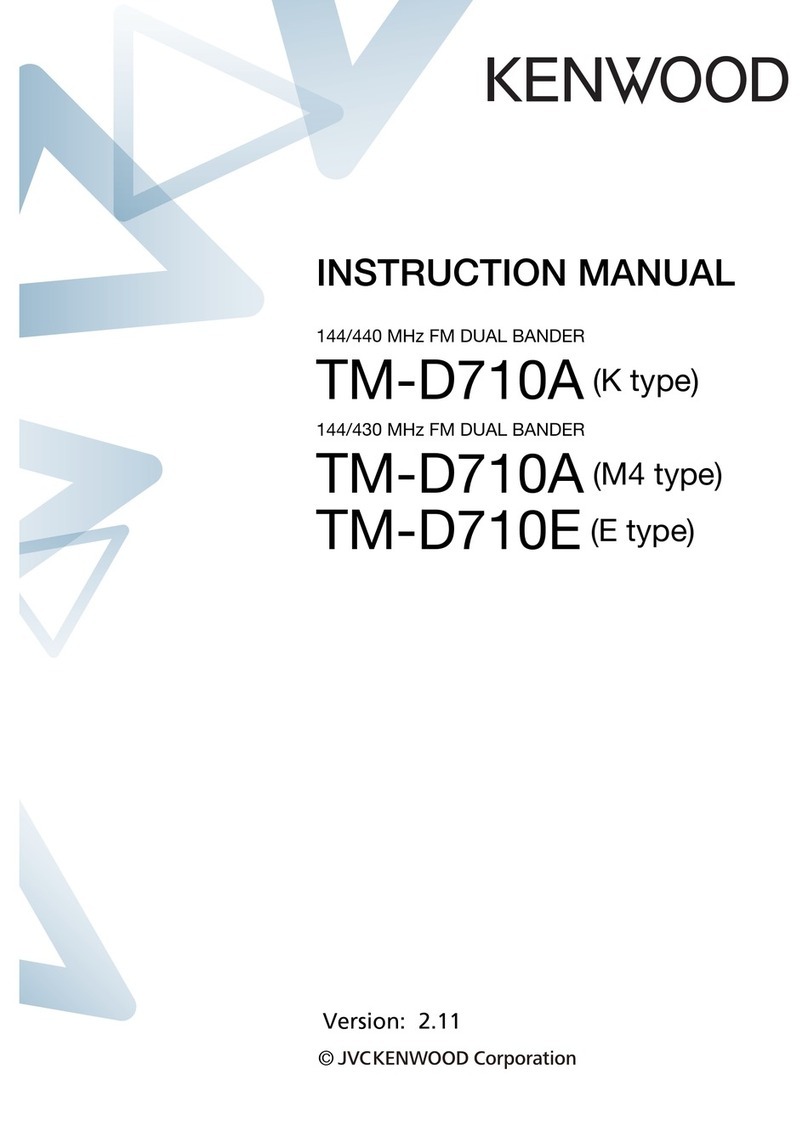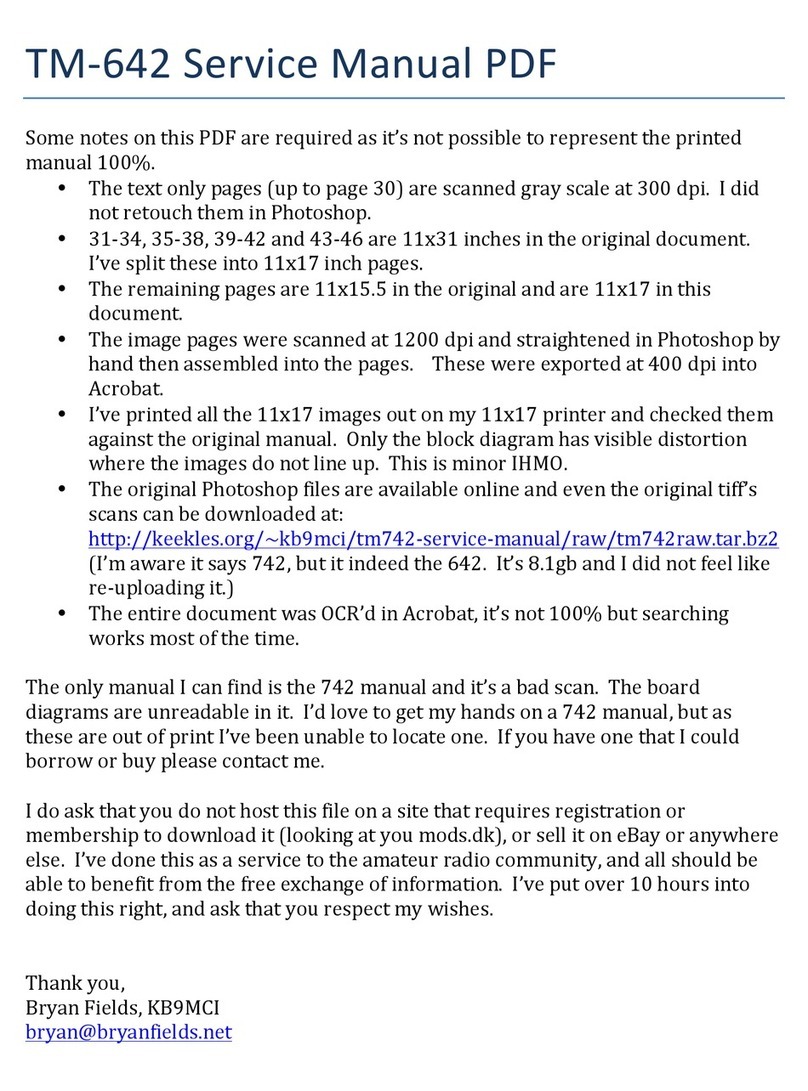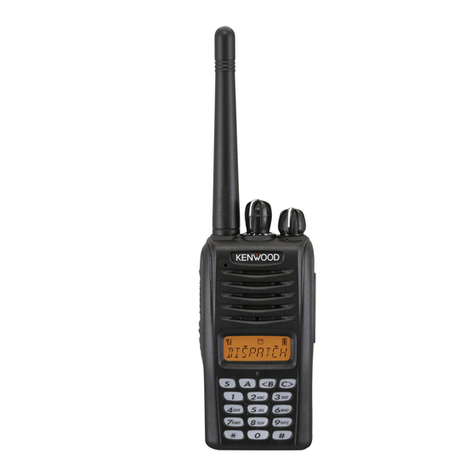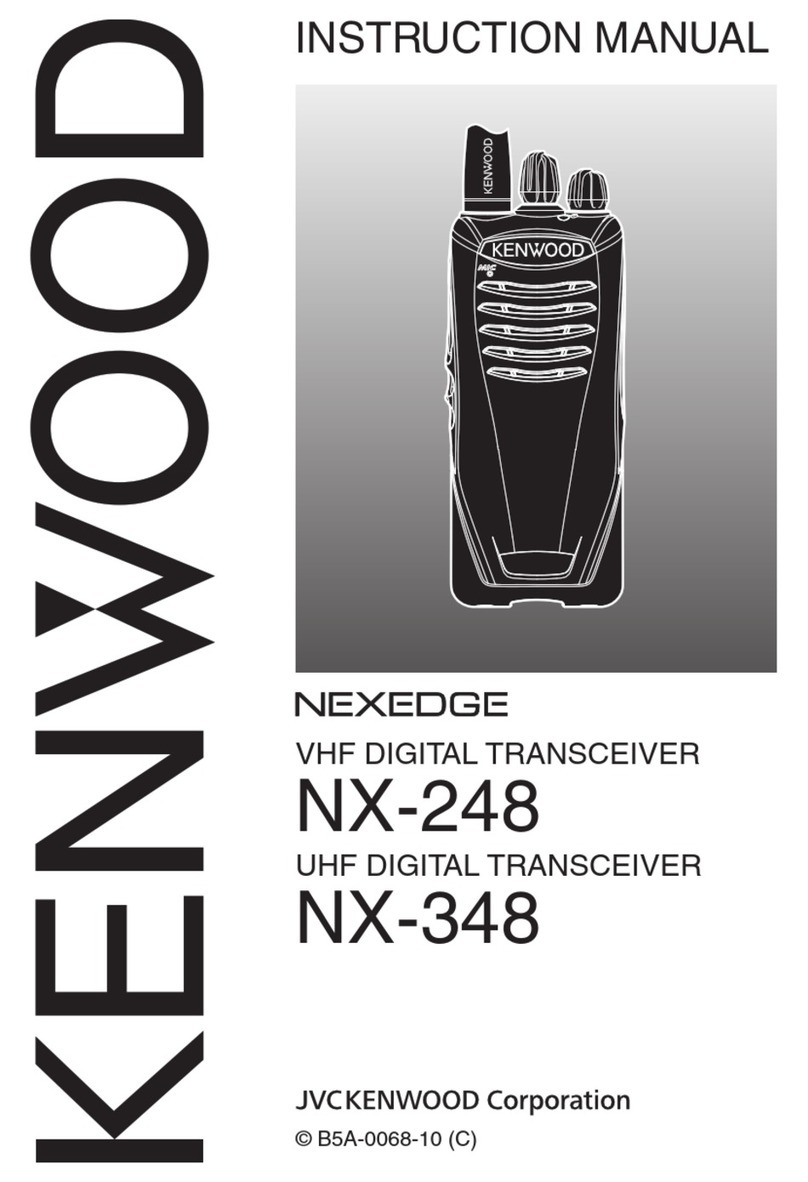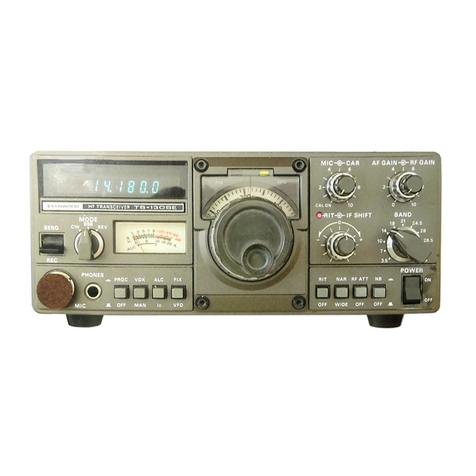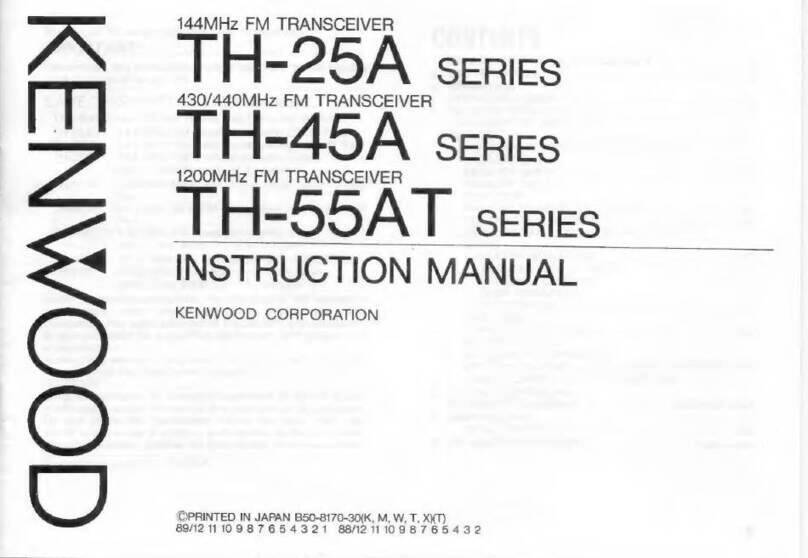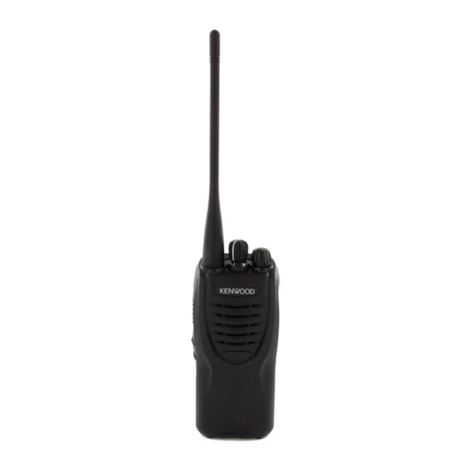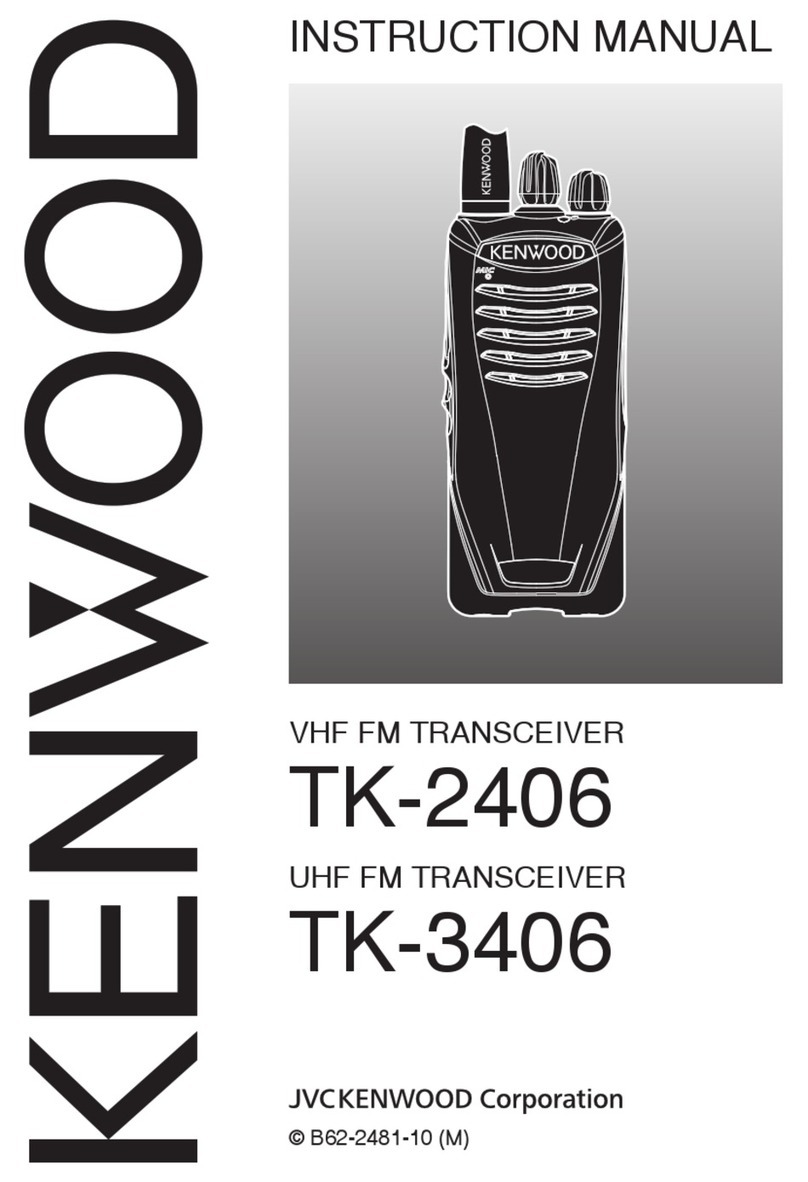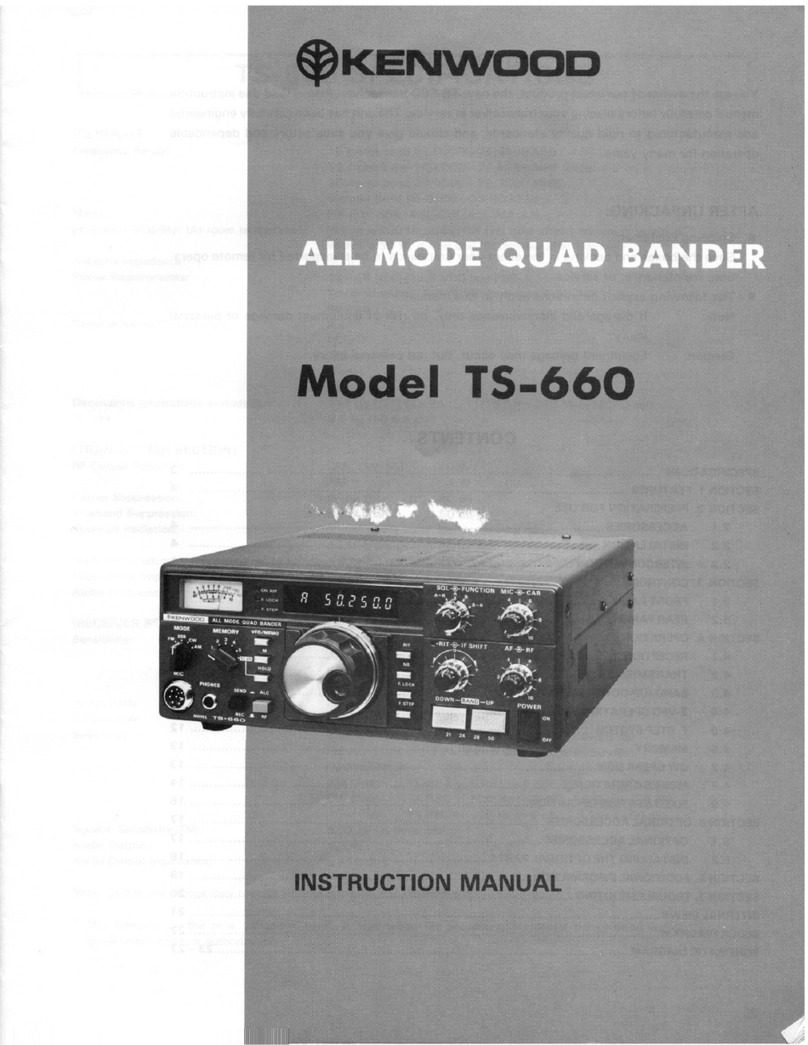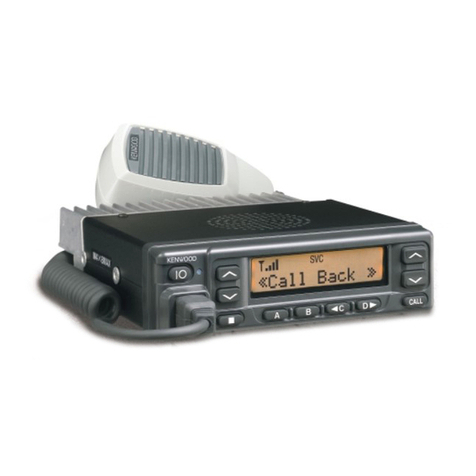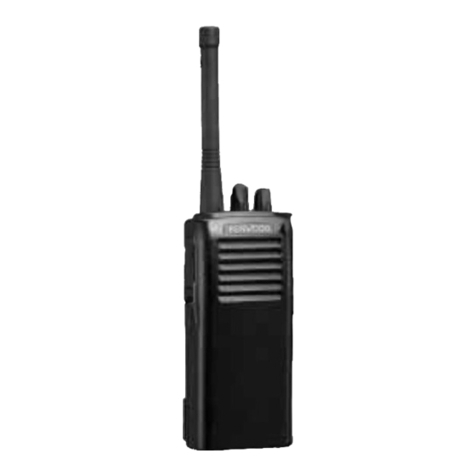CIRCUIT DESCRIPTION
3. SSB, AM, CW filter circuit
The second IF signal amplified
by
021is inputtothe
X48-3110-00 unit in all modes except FM.
If an optional CW filter (XF1) is installed and CW
NARROW is elected in CW mode, the signal passes
through XF1 according to the control signal from the
microcomauter. If XF1 is not installed or CW NAR-
XF2.
InAMmode,the signal passesthroughXF3 and XF2
,-
-
-.-
- ~~-
ROW is nbt selected, the signal passes through XF3
insertion loss
as in SSB mode if
AM
NARROW is selected. If AM
NARROW is not selected, the signal passes through
XF2 only.
In FM mode, the signal does not pass through the
filter circuit in this unit.
Item
Nominal center frequency
Centerfrequency deviation
Pass bandwdth and
Attenuation bandwidth
Rinnle
and XF2.
In SSB mode, the signal passes through XF3 and
-
~
CW
(OPTION)
m
Rating
'
10.695MHz
-
Withini20OHz at 6dB
22kHz or more at 6dB
i-l5kHz or less at 20dB
+2.4kHz or less at 60d~
?ri~w
Guaranteedattenuation
/
60dB or more with~nfo
i
4OkHz
Terminatingimpedance 12kRi5%16pFi5%
lNO--FOOuT
Bandwidth
XF1
:
500Hz
XF2
:
6kHz
XF3
:
24kHz
Table 4 MCF (L71-0249-05)
:
IF unit XF3
Fig. 7 Filter circuit
4. SSB, AM, CW detection circuit
After unwanted signal components have been re-
-
moved in the X4E3110-00 unit, the signal is input to
IC3IKCD08). The signalamplified by IC3 is mixedwith
the CAR signal input from CNll in SSB and CW
modes, and detected to output an audio signal. InAM
mode, the signal is envelope-detected
by
the diode
and capacitor to output an audio signal.
Item
5. FMdetection circuit
The impedance of the second IF signal amplified
by
021 is converted by 023 (RU201) in FM mode, and
unwanted signal components are removed by the CF
(XF2). The resulting signal is input to the detection IC
(IC2:KCD04). The signal is then mixedwiththe 10.24-
MHz oscillator signal to generate the 455-kHz signal.
The signal is passed through ceramic filter CFI, and
detected by the quadrature detector with the signal
phase-shifted by CD1
Rating
Nominalcenter frequency
1
10,695kHz
deviation
1
Within+80Hz at 6dB
.-.,..,..-....s
.,..v
,
.-"".-"?.
I
pears at the base of 031. When the
SQ~VR
is turned
Table 2 MCF (L71-0283-05)
:
IF unit XF1 (Option)
clockwise. the emitter voltaae of 031 increases and
6.
Squelch circuit
7
~ ~
~
~
~
~~
~~-
Insertion loss
1
Within 5dB
i
2dB
~~~~i~~ti~~
irnn~iianrr
1
19nnoifin~
p
Inall modes except FM, the 10.695-MHz IF signal is
detected
by
a diode in IC3, passed through 029 and
030, and a voltage proportional to the signal level ap-
-
Q32 is switchedon.
In FM mode, as the IF signal increases, the noise
level decreases, and the voltage at the SQ pin de-
creases, making the SC pin low. When the SO VR is
turned clockwise, the voltage at the SQ pin rises, and
the SC pin goes high. Current flows through R77, and
032turns on.
035 turns on to mutethe AF signal line. (Fig. 8)
Item
Rating
Table 3 MCF lL71-0433-05)
:
IF unit XF2
-
Nominalcenter frequency
Pass bandwidth
Atten~~atlonbandwidth
Ripple
Insenionloss
Guaranteedattenuation
Terminatingimpedance
'
10695MHz
GkHz or more
at
GdB
4OkHz
or
less at 60dB
2dB or less
3dB or less
60dB
or
more within fo
f
1MHz
12kn
+
10%
I~~F
+
10%
